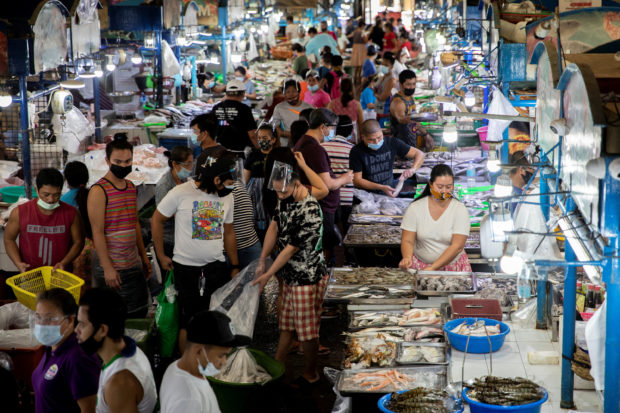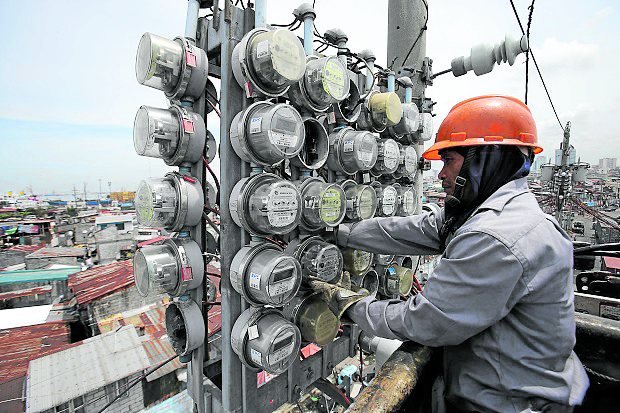Philippines’ February inflation likely remained at 14-year high, analysts say

Vendors and customers wearing face masks for protection against the coronavirus disease (COVID-19) are seen inside a public market in Quezon City, Metro Manila, Philippines. REUTERS/Eloisa Lopez
MANILA, Philippines -Inflation in the Philippines likely remained high in February as some analysts estimated an average consumer price increase of 8.7 percent, the same pace seen in January, if not higher.
“We expect headline inflation to be 8.7 percent year-on-year or higher as food inflation is still expected to be substantial,” according to ING Bank.
The Netherlands-based group said the country’s inflation might sustain an upward trend as price pressures remained evident.
The Bangko Sentral ng Pilipinas had expected inflation to have reached a peak as early as October 2022, but the monthly print kept rising.
“The January report caught many by surprise and we could be in for another upside surprise for headline inflation again,” ING Bank said.
Michael Ricafort, chief economist at Rizal Commercial Banking Corp., also expects an 8.7-percent inflation print for February, adding that this might finally be the peak that paves the way for a gradual easing.
“Prices of some agricultural commodities continued to correct lower in the aftermath of the seasonal increase in demand during the holiday season toward the end of 2022,” Ricafort said.
He said government measures were also helping, such as: targeted importation of sugar and onions; one-year extension of the reduced import tariffs on pork, rice, corn and coal andother non-mon etary policy measures to improve local supply and lower the prices of food and other agricultural products.

Man inspects electric meters —INQUIRER FILE PHOTO
Food and utilities
Meanwhile, Security Bank Corp. chief economist Robert Dan Roces penciled in 8.9 percent inflation rate for February with a 0.2-percentage-point leeway for error — meaning a range of 8.7 percent to 9.1 percent. This was a narrower range that coincides with the BSP’s own forecast of 8.5 percent to 9.3 percent, also with a midpoint of 8.9 percent, which is faster than January’s print.
“Food and utilities will remain the contributors, but looking forward, broader importations of food items plus subsidies to PUV (public utility vehicle) drivers, farmers, fisherfolk, are expected to help temper inflation’s effects,” Roces said.
“As such, there is a good probability that the February print could be toppish but of course significant upside risks remain for the year,” he added. “Nonetheless, our current estimates show price pressures should begin tempering by the second quarter.”
United Kingdom-based Pantheon Macroeconomics forecasts a 9-percent inflation for February.
Meanwhile, Japan-based Nomura Group said a turning point was near, anticipating a faster easing of the consumer price index (CPI) starting the second quarter.
“Behind the scenes, however, pipeline price pressures are easing,” Nomura said. “PPI (producer price index) inflation – a measure of upstream price pressures – is a leading indicator of CPI inflation (and) it has fallen below CPI inflation in most Asian economies.”
RELATED STORIES:
Philippine inflation yet to peak; Feb high pegged at 9.3%
